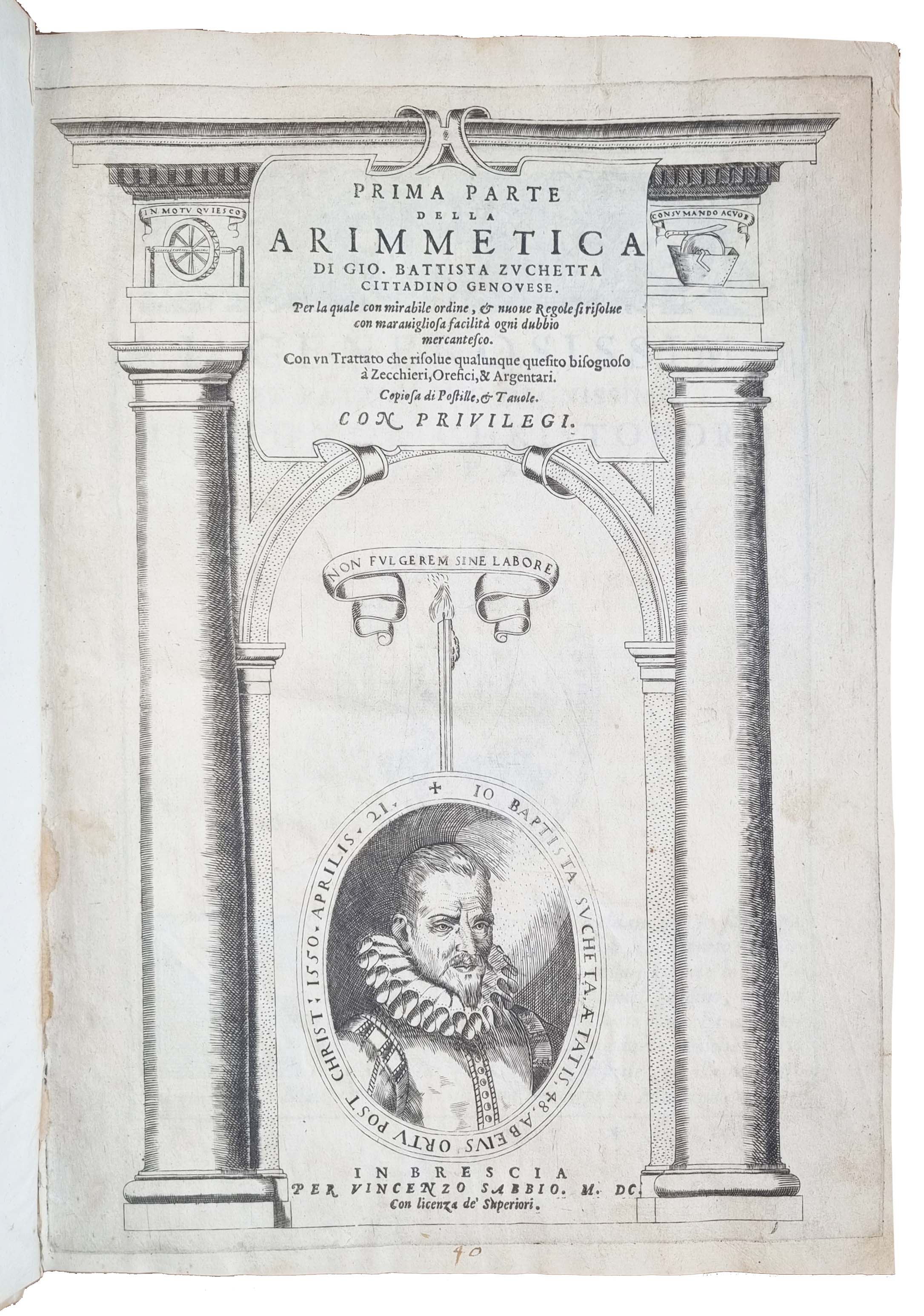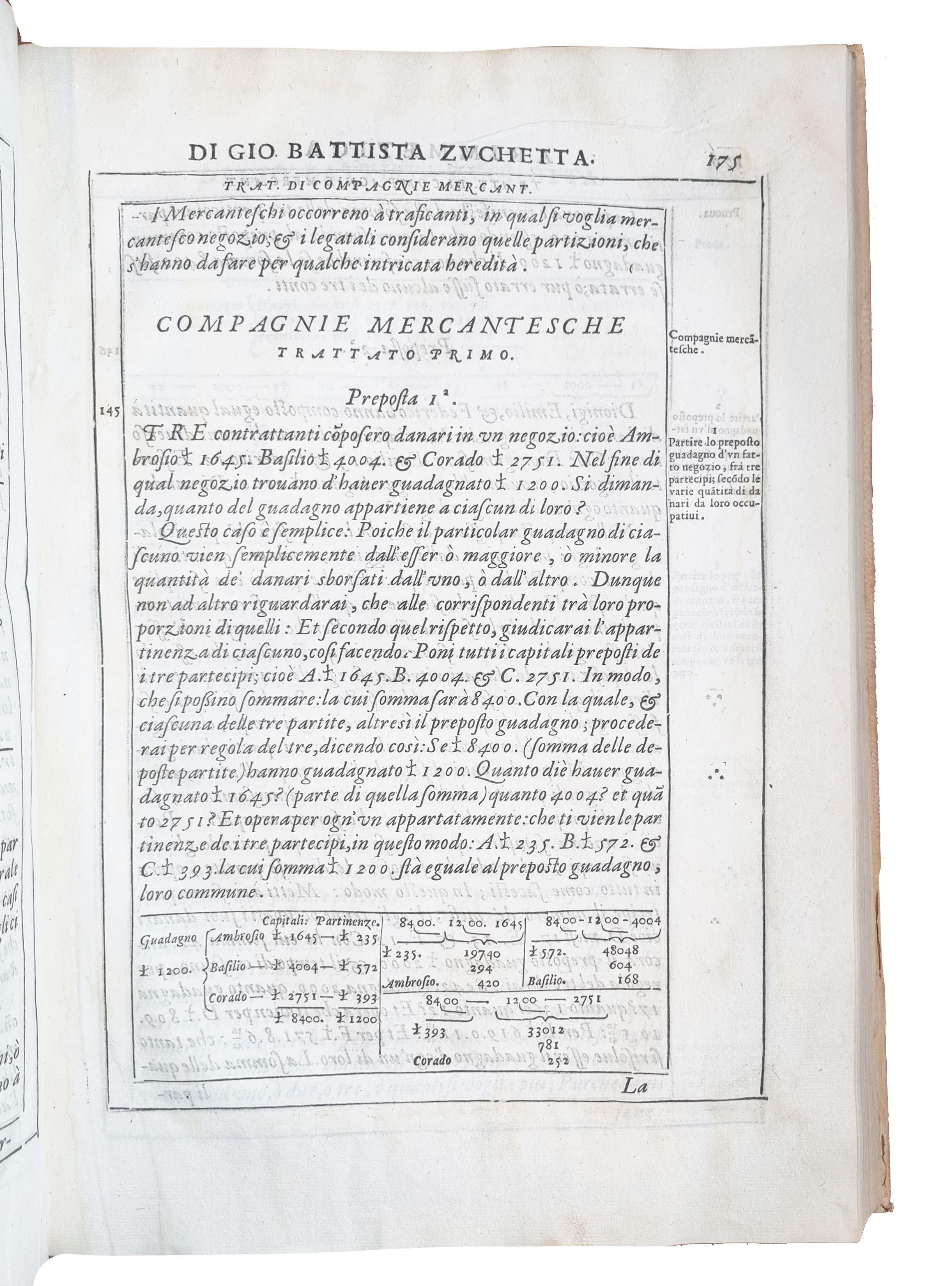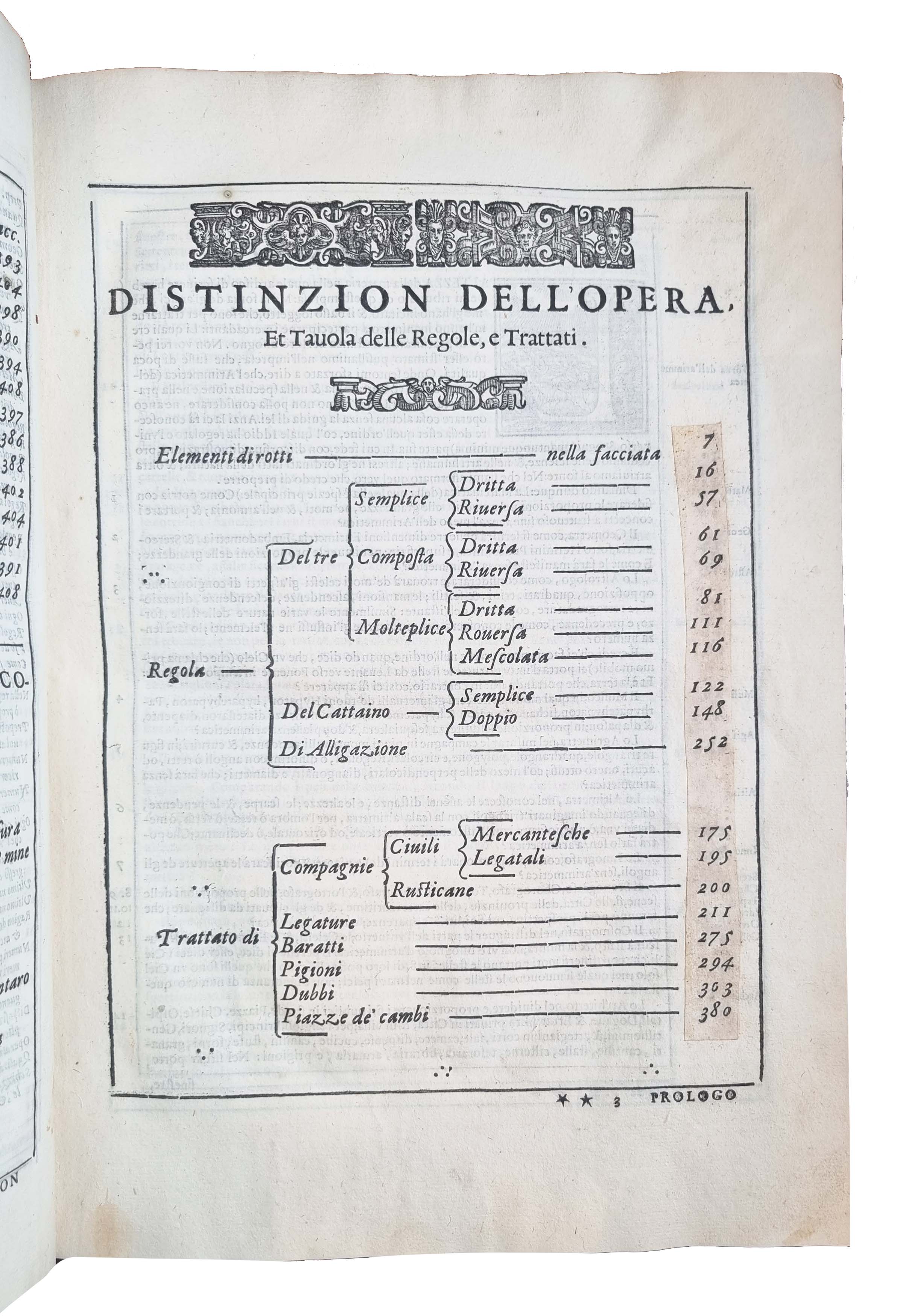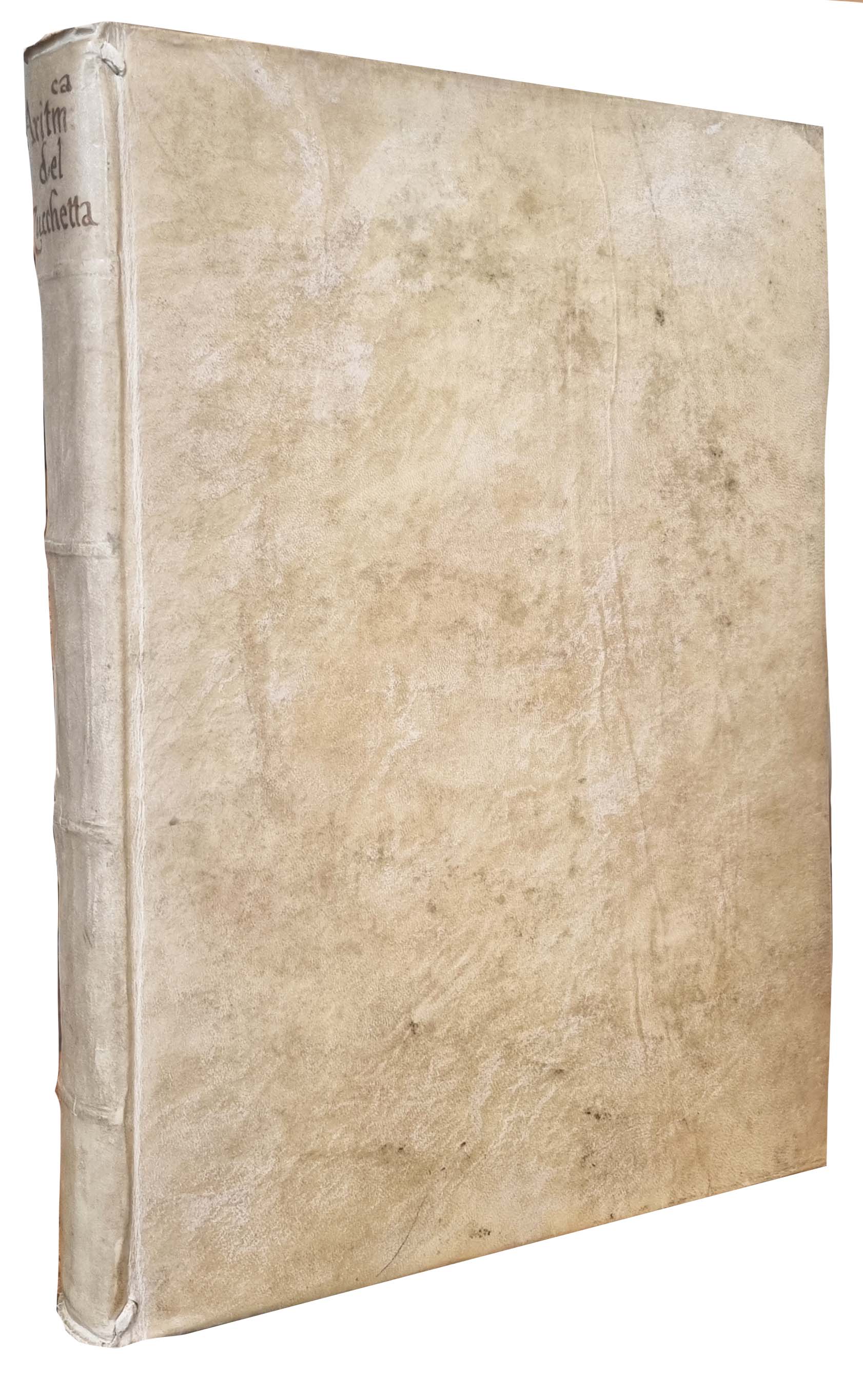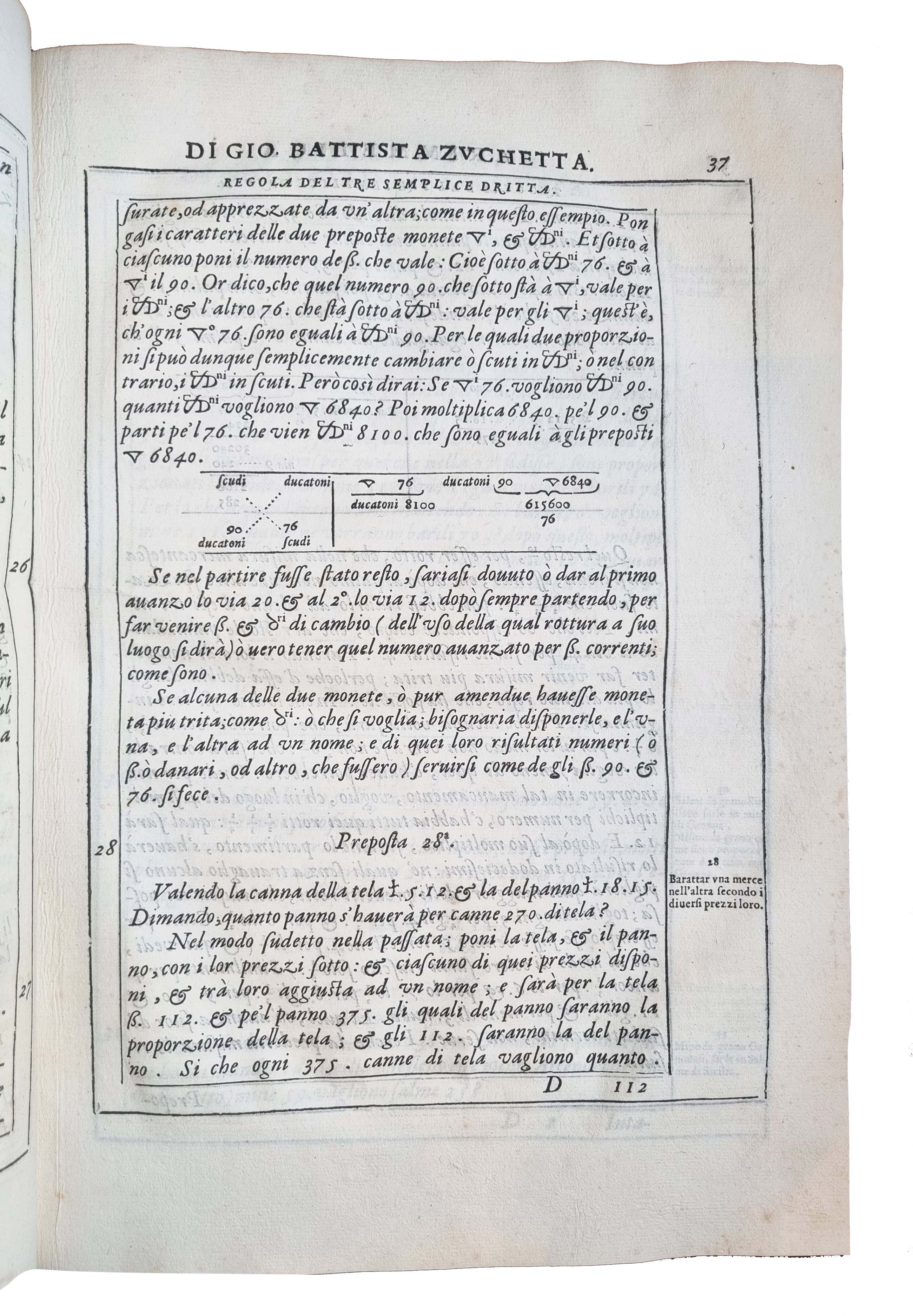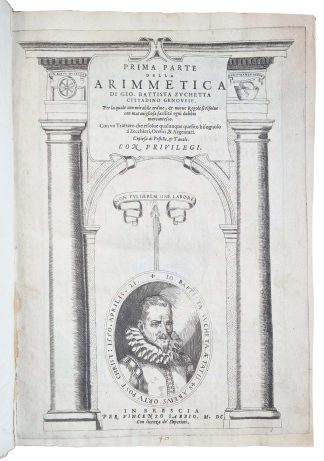ZUCHETTA, Giovanni Battista
RARE FIRST AND ONLY EARLY EDITION
Prima Parte della Arithmetica
Brescia, Vicenzo Sabbio, 1600£4,750.00
FIRST EDITION, Folio. Pp (xviii) 412 (iv). Italic letter within printed double-line border,numerous printed mathematical calculations in text. Title within elegant architectural border, large medallion portrait of the author aged 48 at foot, contemp ms ’40’ beneath. Fine engraved portrait of the dedicatee Christopher Papa of Nuremberg with woodcut initial and ornamental headpiece in next, further woodcut initials and ornaments. Contemp. printed correction slip pasted to contents table, very occasional early ink marginalia and corrections, prob of Antonio Orsetti, his contemp. autograph on fly. Slight age yellowing, prelim blank with oil marks, a very good, clean, well-margined copy in contemp. vellum over boards.
Rare first and only early edition of this handsomely produced, important, arithmetical textbook devoted to practical and commercial arithmetic and a leader in its field. Although described as ‘Prima Parte’ it is in fact the only part ever printed.
Zuchetta was a mathematician from Genoa; in his preface he apologizes to the reader for writing in his provincial ‘Genoese’ rather than the by now general Tuscan. “The ‘Prologo’ is a curious dissertation on the ‘Arti Scienze, & altro,’ with some ninety-eight arguments to show the need for arithmetic on the part of all classes of humanity. The farmer, the musician, the thief, the cook, the prelate, all are shown to have need of number; and Nature, Intelligence and even God himself make use of it. The book presupposes a knowledge of the arithmetic of integers, and opens with a treatment of fractions. The rule of three, in all of its forms, and with the most unbusinesslike numbers, is then discussed at great length and this is followed by various complications of the Regoladel Cattaino, ‘cosi detta da gli Arabi inventori di quello, ch’in lingua nostra significa falso posizione’. The latter part of the book [everything after p. 175] treats of such topics as partnership, barter and alligation.”(Smith, cit. infra) Much of the text deals with mercantile transactions, especially those involving more than one currency and tables of exchange rates are given for all the major trading centres likely to be of interest to Italian merchants – a full page is given of the currency rates in London, ‘sterlini’ against the principal Italian currencies. Apart from its obvious mathematical interest (though it produced or developed no new theories) the work is obviously of considerable interest to the social, economic and legal historian.
Antonio Orsetti evidently had a significant library, particularly of scientific and mathematical works, as an appreciable number can still be traced. He was clearly acquiring quite systematically in the first part of the 17th C, regrettably however we have discovered nothing more about him.
Scevolini Domenico, mathematician of XVI century was one of the last and most thoughtful proponents of judicial astrology in Italy before the suppression of the art by the index and the inquisition.
BM STC It. p. 745. Brunet V 1544 \\\"seule partie publiée\\\". Smith, Rara Arithmetica pp. 425-26 (reprod. t-p). Not in Kress or Goldsmith\\\'s. Riccardi I (ii) 674 \\\"rarissimo vol... in bel. carat. corsivo...é apprezzto come uno dei migliori trattati di arithmetica mercantile.\\\"In stock


